
From April 10 to 13, 2025, Peking University Yuanpei College organized an archaeological practice activity in Fuzhou, Fujian Province. Fifteen students, led by Associate Professor Zhang Jianwei (tenured faculty member of the School of Archaeology and Museology at Peking University and mentor at Yuanpei College) and Ding Xiyou (Party Secretary of the Department of Sociology and Deputy Party Secretary of Yuanpei College), embarked on a four-day archaeological exploration in Fuzhou. They visited key cultural and historical sites such as Hualin Temple, Mawei Shipyard, the Three Lanes and Seven Alleys, and the Xindian Ancient City Ruins Park, gaining an in-depth understanding of Fuzhou’s historical evolution and cultural atmosphere through on-site visits.
On the morning of April 11, the Yuanpei College group arrived in Fuzhou and first visited Hualin Temple, which houses the oldest surviving wooden structure in southern China. The main hall of Hualin Temple is built during the transition from the Tang to the Song Dynasty. It features a Single-eave Xieshan (hipped-and-gabled) roof with distinct the Five Dynasties architectural characteristics—simple yet elegant and majestic, exquisitely crafted with elegant structural components. Under the guidance of Chen Kaimin (Director of the Hualin Temple Preservation Institute), the students learned about Fuzhou’s urban layout and the historical significance of the temple’s construction while observing its overall form and key architectural elements. Later, Professor Zhang Jianwei led the students in a detailed study of the hall’s proportions and measurements, deepening their understanding of specialized terminology and the unique aesthetic principles of ancient Chinese architecture. By examining column bases and bracket sets (dougong), the students traced the "evolutionary history" of ancient architectural components, witnessing how practical functions gradually gave way to artistic expression over time.
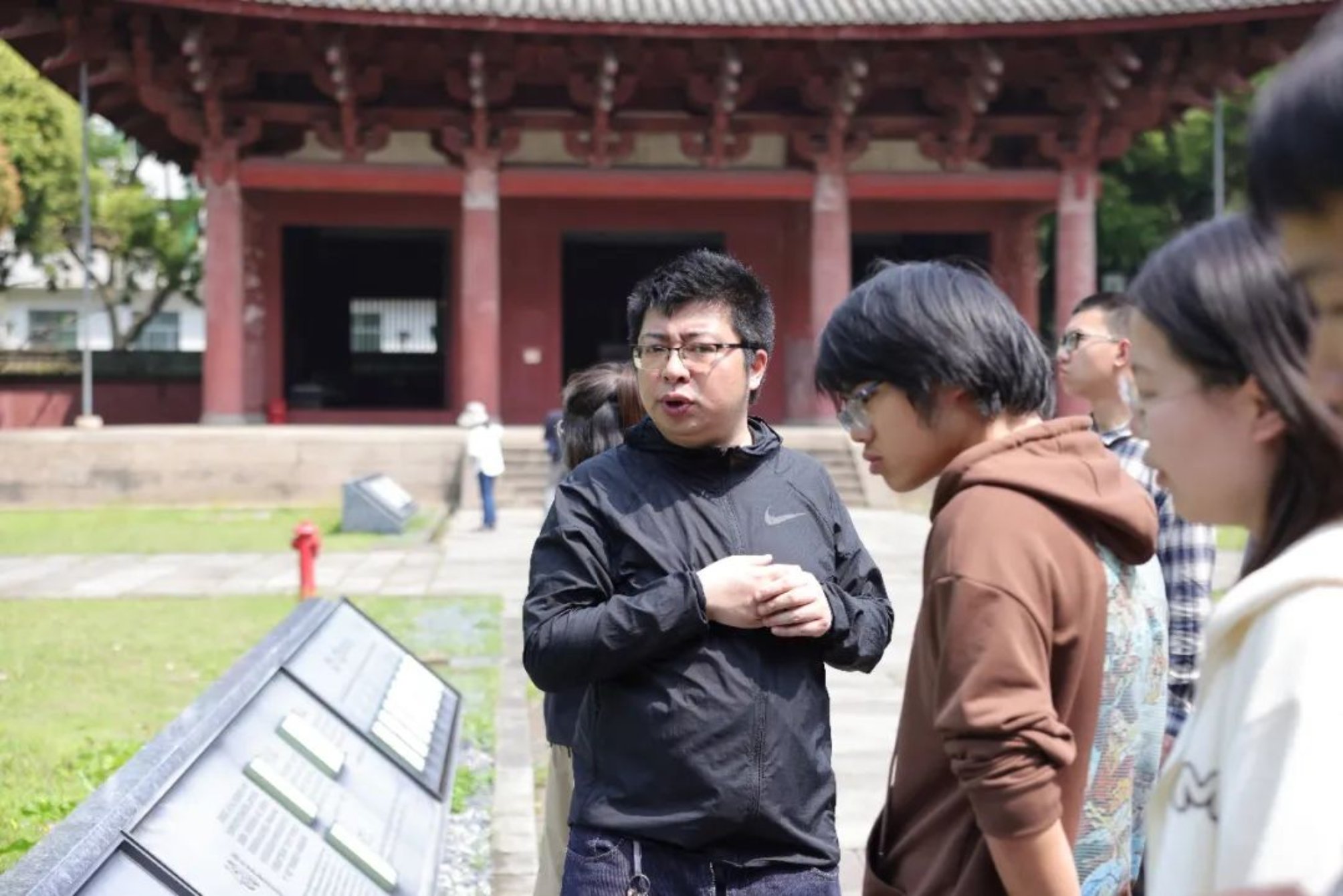
Professor Chen Kaimin introducing the history of Hualin Temple

Professor Zhang Jianwei explaining the architectural components of Hualin Temple
In the afternoon, the team traveled by bus to the Mawei Shipyard Cultural Park, where they explored the profound impact of shipbuilding culture on modern Chinese history. The students watched the "Memories of the Shipyard" performance, embarking on a journey through time to witness the establishment of the Mawei Naval Academy and the indomitable spirit and fervent dedication of our forebears in their endeavors to save the nation from peril and rejuvenate it through pragmatic endeavors. Inside the museum, they engaged in a "dialogue across time" with renowned national heroes, discovering the shipyard’s far-reaching influence on China’s modern industry and education through artifacts and documents. Walking through historic workshops such as the Iron Rib Factory, Engine Workshop, and Design Institute, the students immersed themselves in the site’s legacy, moved by the enduring strength of its mottled red walls and iron pillars. The visit concluded with a tribute to the statue of Yan Fu, the first president of Peking University, followed by a precious group photo.
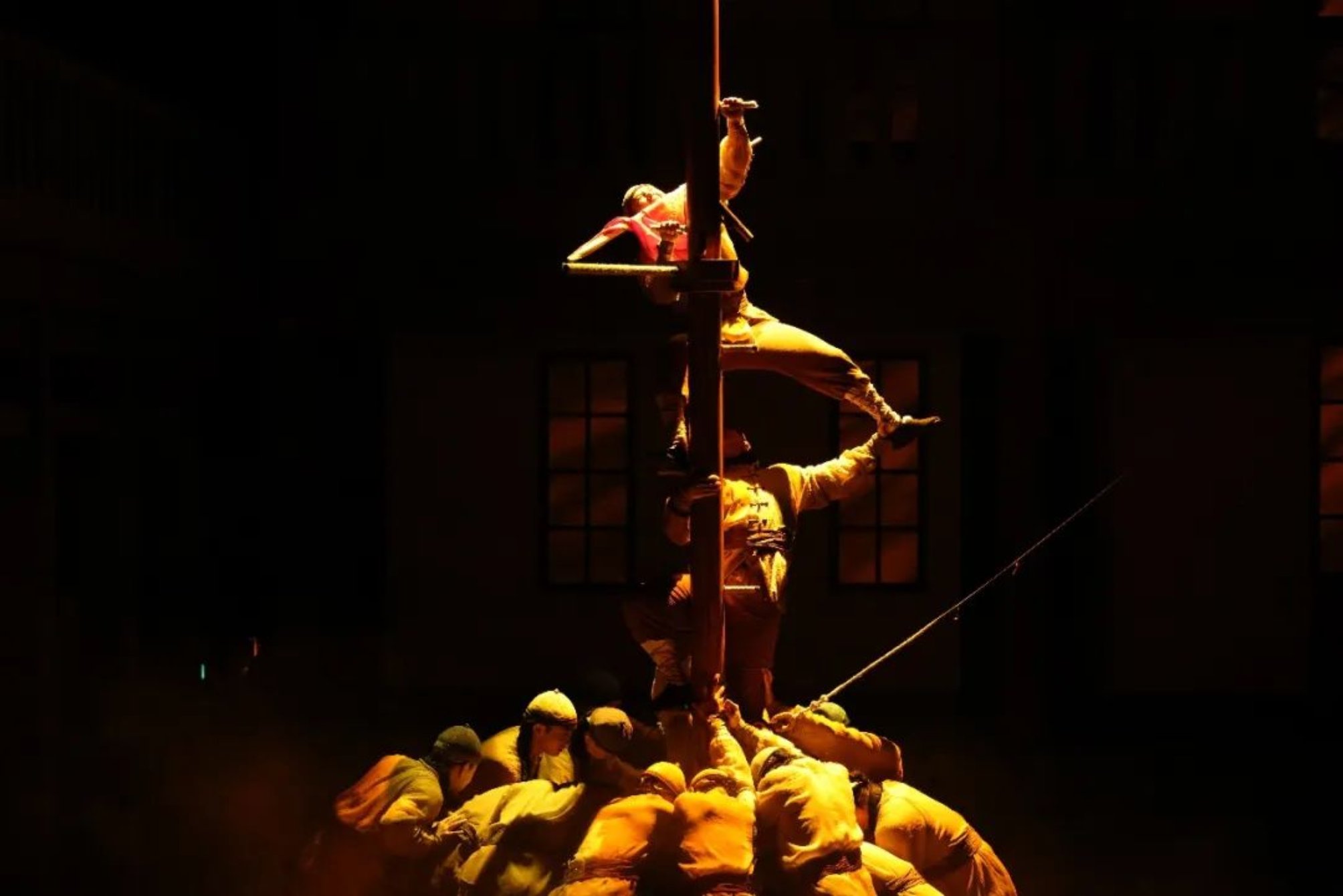
The "Memories of the Shipyard" performance
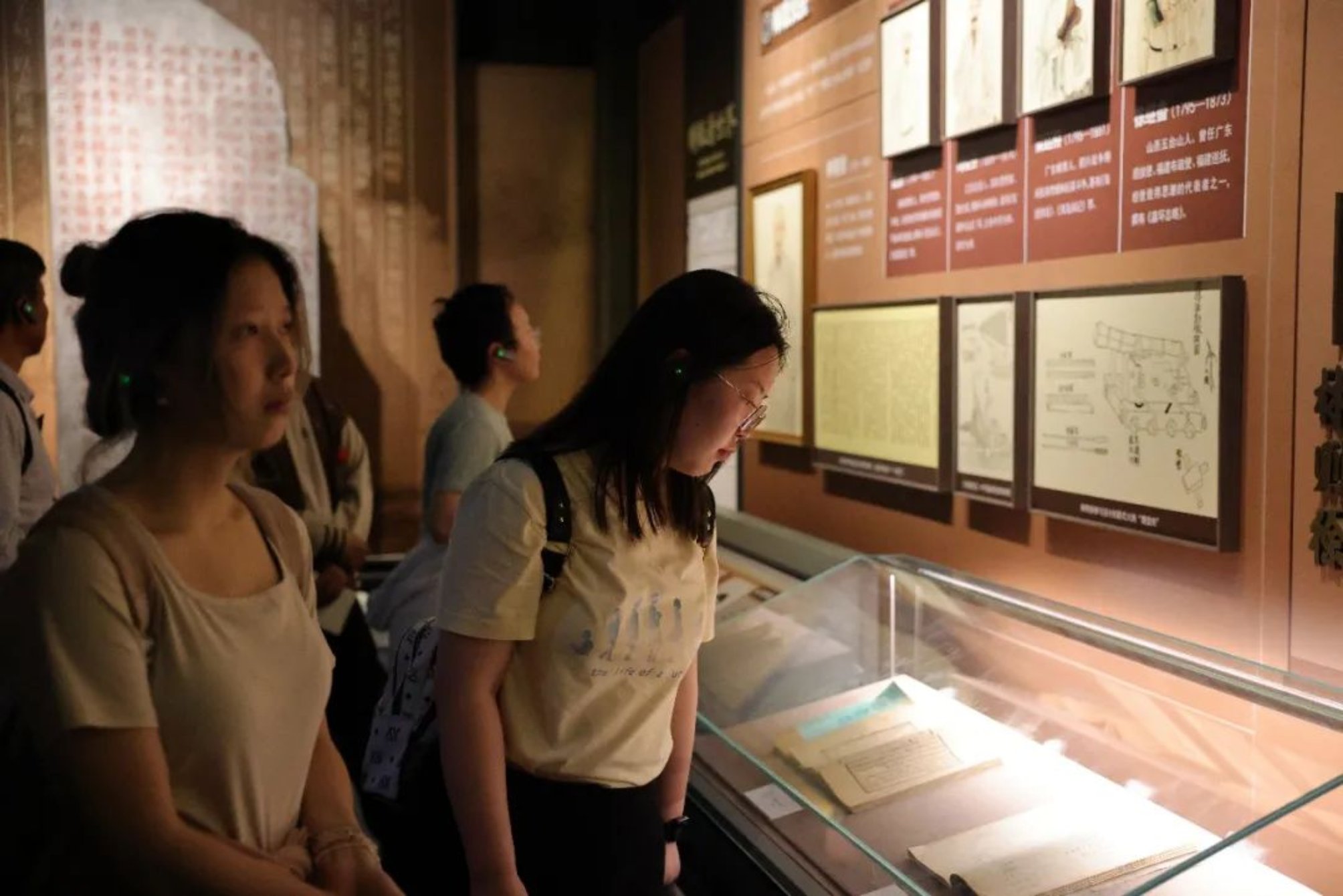
Visiting China Shipbuilding Culture Museum
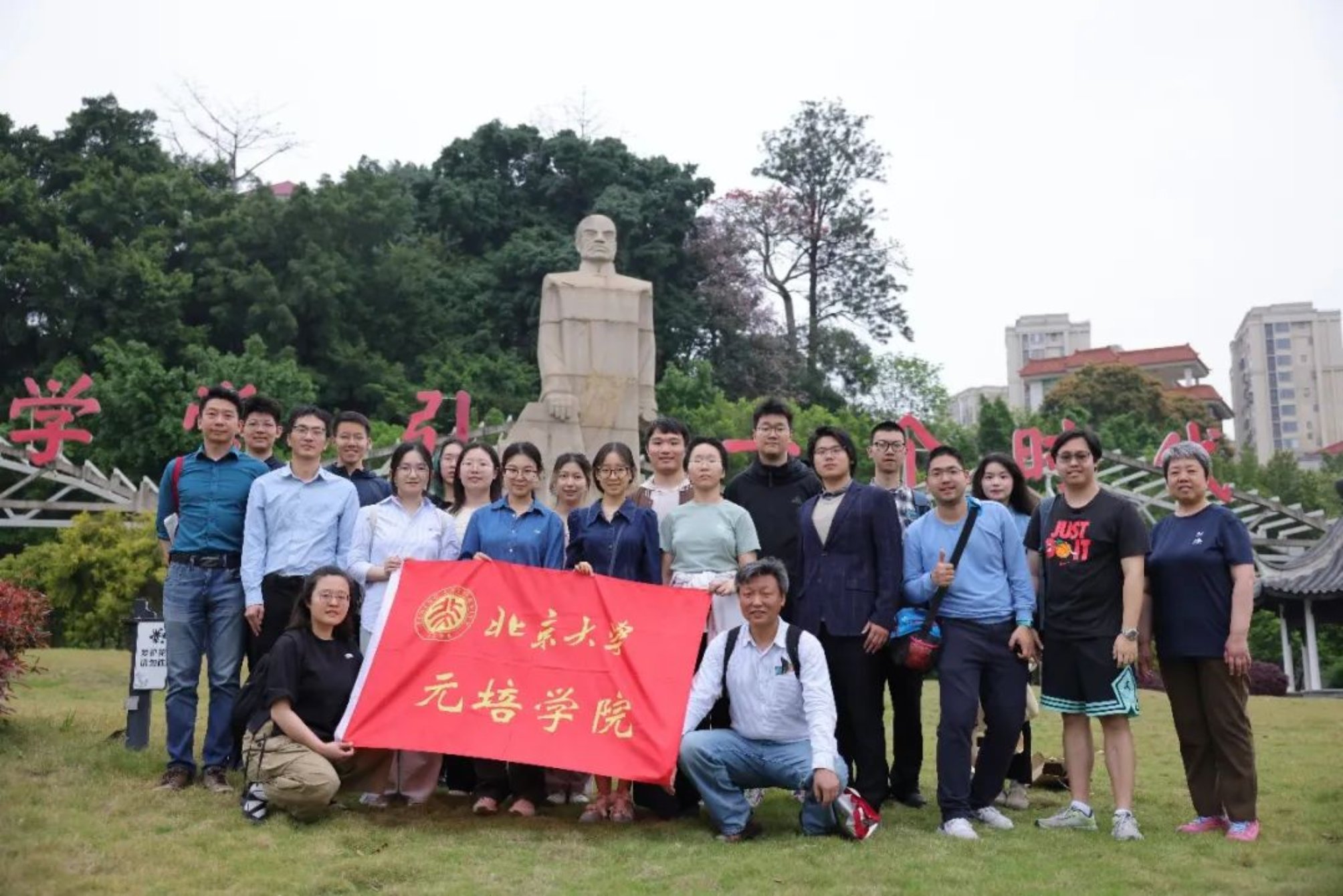
Faculty and students posing for a group photo before the statue of Yan Fu
On the morning of April 12, the teachers and students strolled through Fuzhou’s historic districts, soaking in the city’s rich cultural heritage at Wu Pagoda and the Three Lanes and Seven Alleys. Wu Pagoda, a landmark of Fuzhou’s "Two Pagodas, Three Hills, and One Street" skyline, was built during the Tang Dynasty with seven tiers, each adorned with stone-carved Buddhist statues from Jiangle. The students climbed the pagoda, studying its structure and decorations, and enjoying a panoramic view of Fuzhou’s lush greenery from the top. The corbeled eaves, designed to withstand the humid southern climate, have protected the stone pagoda for over a millennium. Later, amidst bustling crowds, the students admired the architectural marvels of the Three Lanes and Seven Alleys, experiencing the harmony of landscape and garden design. At the former residences of luminaries such as Yan Fu, Lin Juemin, and Bing Xin, they delved into the lives of these figures, marveling at Fuzhou’s legacy of scholarly excellence and talent.
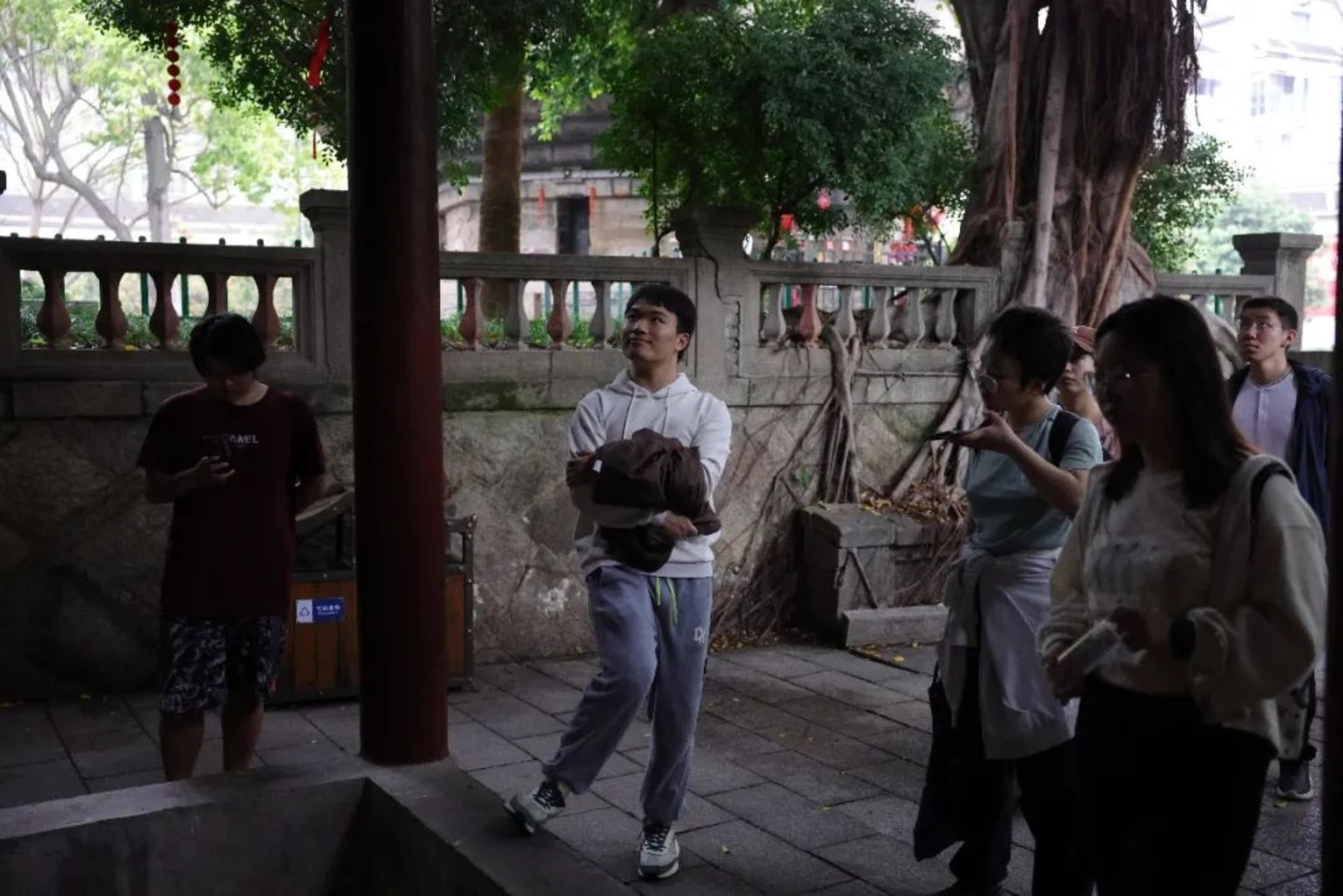
Visiting Wu Pagoda and Tang Dynasty Stele
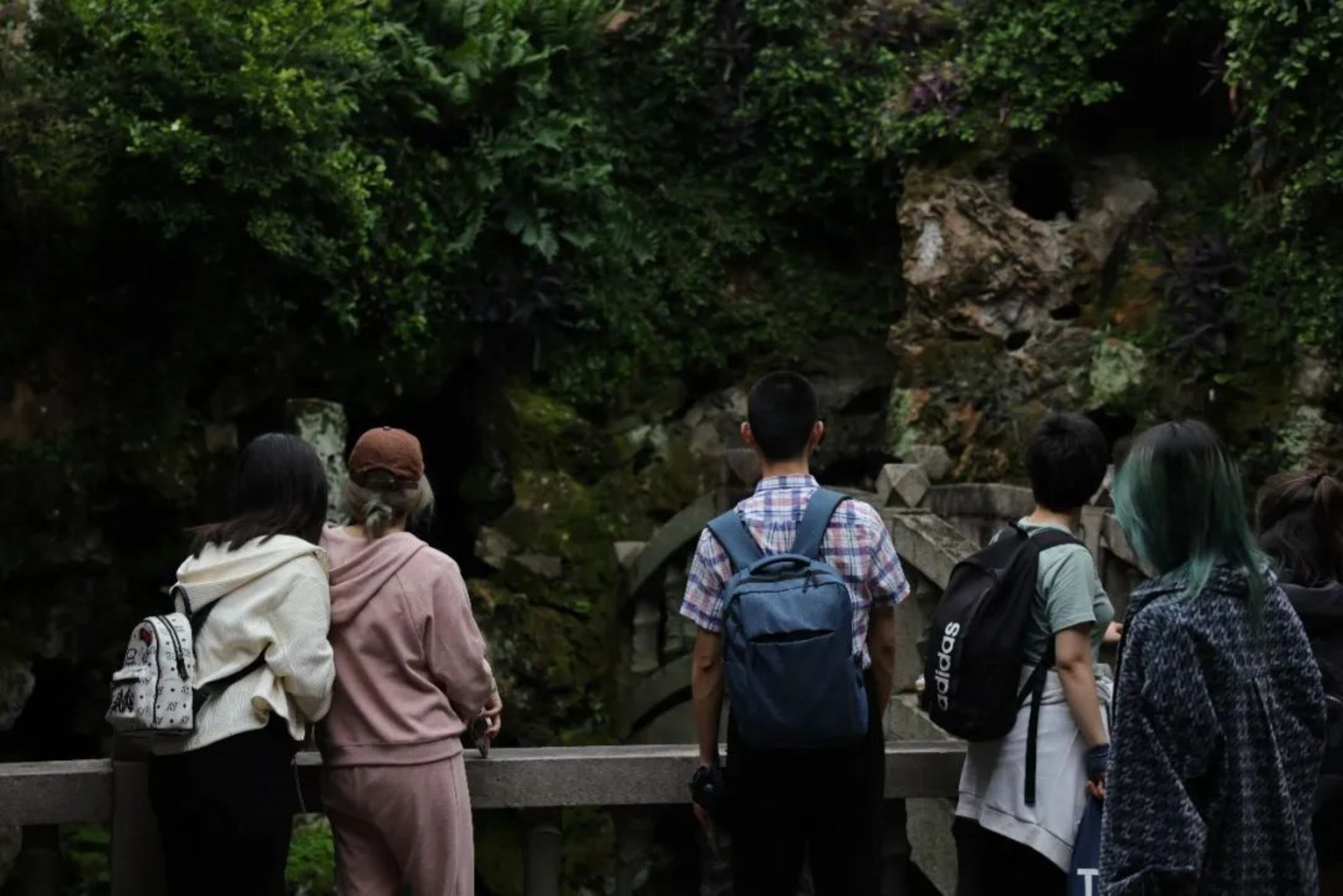
Visiting the Three Lanes and Seven Alleys
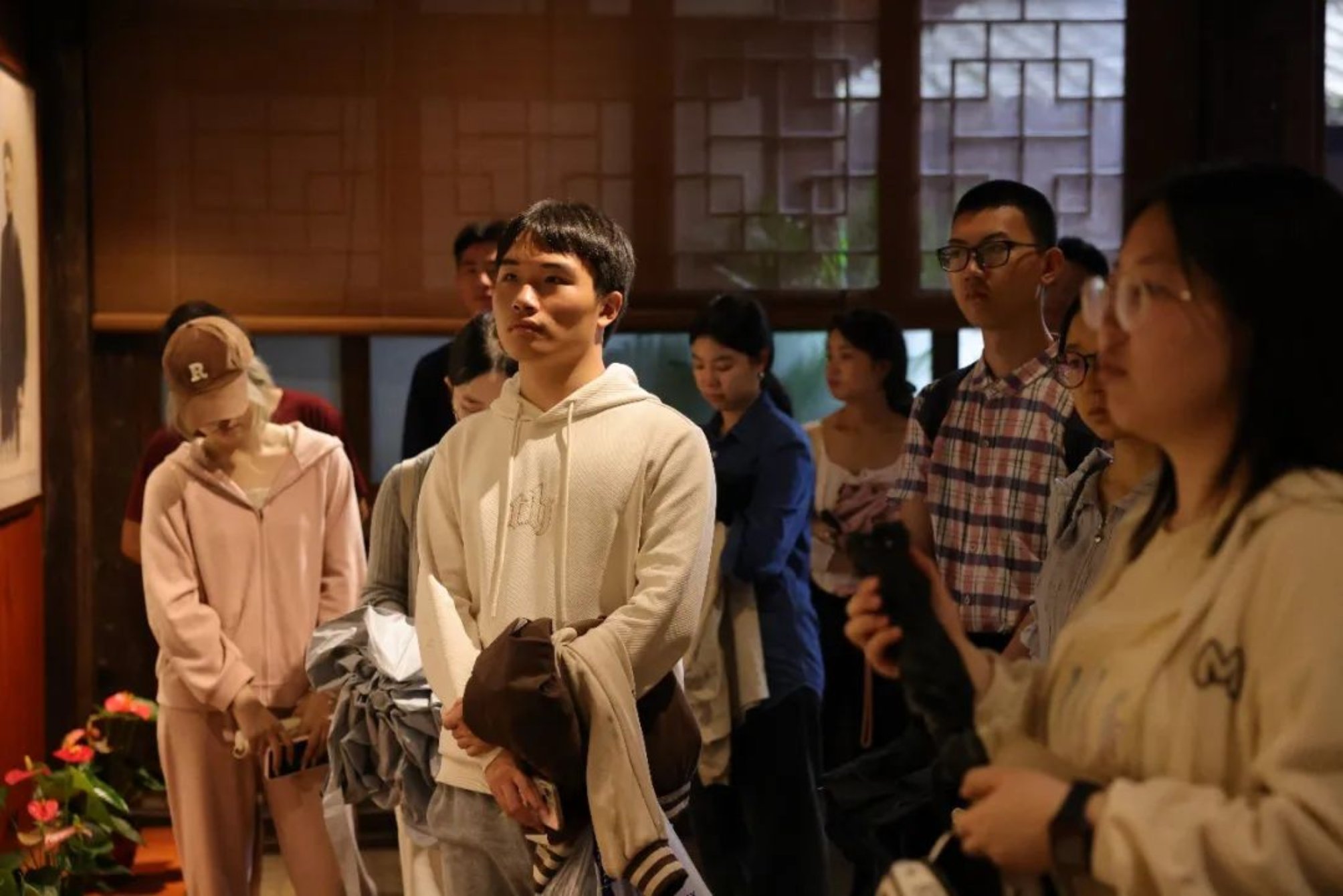
Visiting the former residence of Yan Fu
In the afternoon, the group visited the Xindian Ancient City Ruins Park, retracing Fuzhou’s development since the Minyue Kingdom and envisioning its future in cultural tourism. In the "Heart of the East Sea Jade: A Millennium of Fuzhou Poetry" exhibition hall, verses depicting Fuzhou’s seasonal landscapes sparked the students’ imaginations. The "Min-Yue Charm" exhibition unfolded the scroll of the Minyue people toiling diligently to pioneer new frontiers, making the millennia-old land feel even more profound beneath their feet. At the Han Dynasty road archaeological site, the students could almost hear the bustle of an ancient street—carriages clattering, pedestrians chatting—painting a vivid picture of a thriving era.
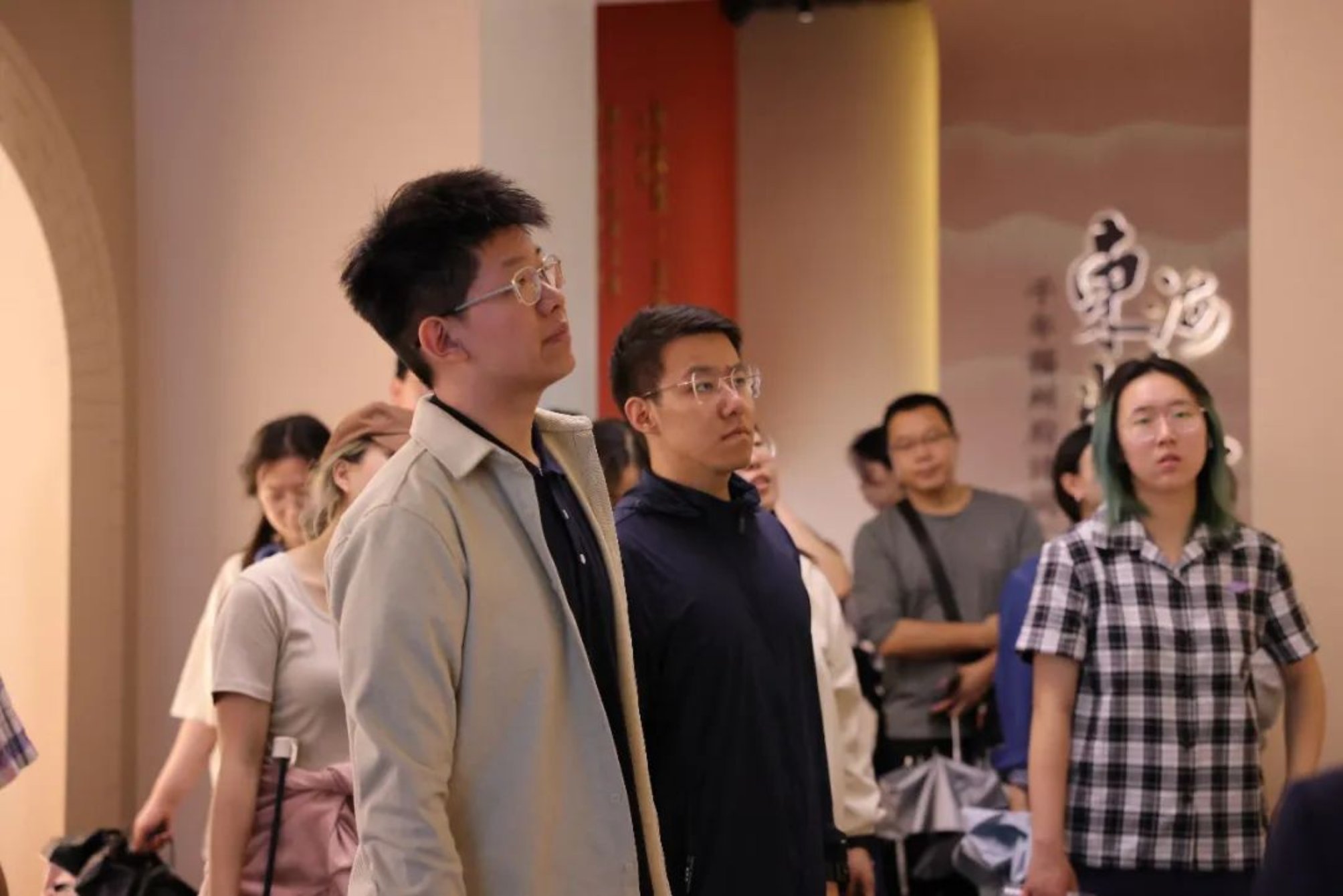
Visiting the "Heart of the East Sea Jade: A Millennium of Fuzhou Poetry" exhibition

Faculty and students taking a commemorative photo at the entrance of Xindian Ancient City Ruins Park
At this point, the four-day Fuzhou archaeological practice came to a successful conclusion. Through field research and expert guidance, the Yuanpei College delegation gained a comprehensive understanding of Fuzhou’s history and culture. They were captivated not only by the city’s unique and magnificent architecture but also by its profound cultural heritage, patriotic spirit, innovative drive, and openness. The experience further strengthened their sense of duty to preserve and pass on historical legacies. Moving forward, Peking University Yuanpei College will continue to innovate its historical and cultural education programs, encouraging students to explore urban and rural landscapes, trace historical contexts, broaden their perspectives, and achieve well-rounded development.